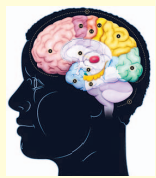Anti-dote of counselling to neurotic mind
| Date :06-Apr-2025 |

By DR BHUSHAN KUMAR UPADHYAYA
In the first chapter of the Geeta
we have seen the neurotic tendencies demonstrated by
Arjuna. Lord Krishna has devised
the techniques of one to one
counselling to Arjuna in order to
restore his intellectual balance
and foresight. Hence the second
chapter has been named as
Sankhya Yoga or the chapter of
Knowledge. It is the knowledge
which dispels ignorance and
steers the misguided persons on
the right path. An apt counsellor
channelises the knowledge in
such a way that the sick starts
realising the truth and recovers
from the disease.
The counsellor applies the language, imagery, phrases, symbols,
concepts and similes which are
familiar to the victim of mental
depression. Since Arjuna was
raised in the environs of the Vedic
culture, Lord Krishna uses the core
concepts of the Vedic philosophy
to ignite his intellect and drive
away his escapist mentality. First ,
he creates jitters in the mind of
Arjuna by expressing his surprise
over his mental impotence. The
utterance of the word impotence
jolts the conscience of a great
warrior like Arjuna. Earlier he was
totally determined not to fight the
war, but now he is seeking guidance from Lord Krishna about the
righteous path to follow. The
opening remark of the counselling
has brought a great mental shift in
couple of moments.
The biggest
fear which was plaguing the mind
of Arjuna was that of death of his
relatives including himself. Lord
Krishna propounded that there is
nothing permanent in the world .
Everything is in a flux. Even the
human body undergoes irreversible changes from childhood to
youth and from youth to old age.
Ultimately, the body perishes and
vanishes into oblivion. But it is not
the end of the existence.
The inner
self in the form of consciousness is
immortal and everlasting. It is an
inseparable part of the Infinity.
Anxiety and depression happens
because one resists the dynamics
of the change which is inevitable.
In this context while extending the
concept of the everlasting nature
of consciousness, Lord Krishna
beautifully weaves one of the cardinal theories of the transmigration of the soul
and reincarnation which is one
of the hottest
topics and subjects of research
in the field of
Parapsychology
even today.
Pleasure and
pain are intertwined. So a person is required to
bear both pleasurable and
painful sensations. Thus, sense
organs need to be trained to adapt
to these fleeting experiences.
The
practice of bearing pleasure and
pain gives rise to mental resilience
and equipoise.
The equilibrium achieved
through the practice of Yoga
establishes one in the state of balance and harmony. It is with the
harmonious personality that one
performs actions without being
attached to it. Actions performed
without a sense of attachment
does not generate worries or anxiety. A person is established in a
flow state of the mind. This state
is the most active as well as the
creative state of
the mind.
During the conversation Lord
Krishna has
defined Yoga at
two places. He
has called Yoga
as Samatva or a
state of equilibrium.
This is the
state when the
body and mind
are in perfect
coordination
and unison. Another definition of
Yoga given by Lord Krishna is
Karma - Kaushalam or the efficient performance of the bounden
duty. This is the Nishkama Karma
Yoga or the actions performed
without being attached to it. Such
a person has been called
Sthitaprajna or established in wisdom. Thus, we find that the counselling of Lord Krishna which is
therapeutic in the beginning
becomes more philosophical and
spiritual as it progresses further.
(The writer is Former DG
Police & CG, Homeguards,
Maharashtra)
■

